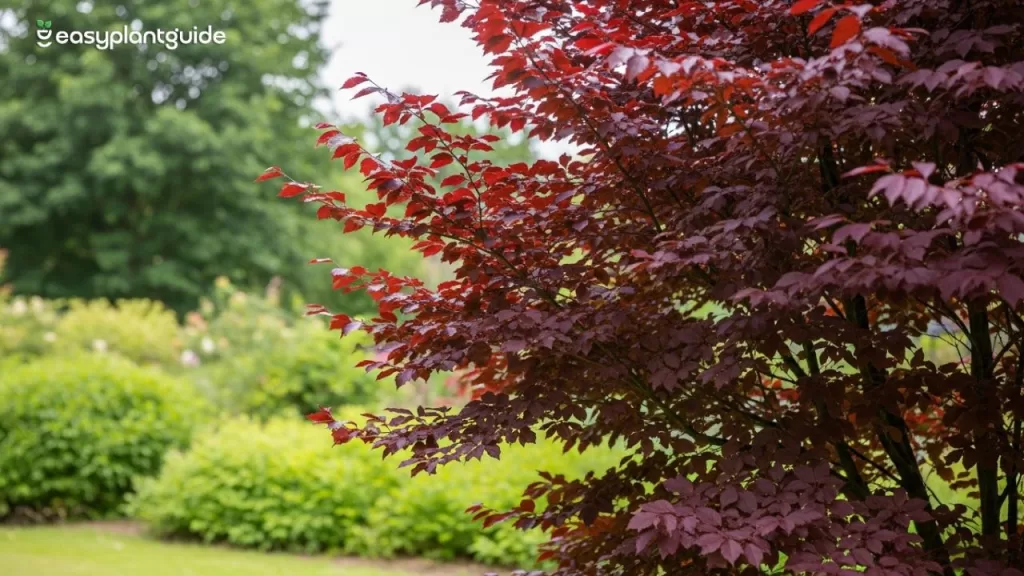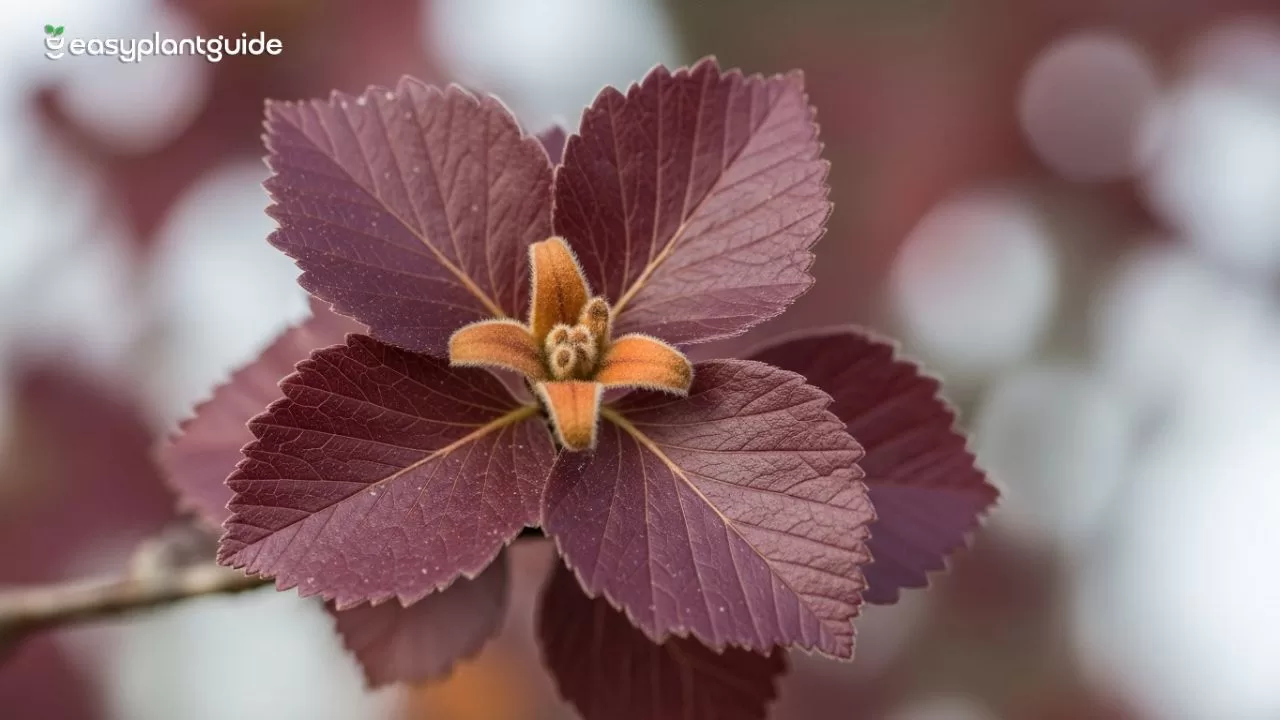Fagus Purpurea: 7 Stunning Copper Beech Tree Secrets
Have you ever come across a massive tree with shimmering purple leaves that seem to change colors with the sun? That’s the Fagus purpurea, more commonly known as the Copper Beech. This remarkable tree is not just a visual delight but a true gem in the world of horticulture. With its regal appearance, hardy nature, and impressive lifespan, the Copper Beech has captured the hearts of gardeners and tree enthusiasts for centuries. Let’s uncover the seven amazing secrets that make Fagus purpurea an unforgettable masterpiece of nature.

What Is Fagus Purpurea?
The Fagus purpurea, also called the Copper Beech or Purple Beech, is a deciduous tree from the Fagaceae family. It is a cultivated variety of the European Beech (Fagus sylvatica), distinguished by its stunning purple-bronze foliage. This tree has long been cherished for its ornamental beauty and stately presence in parks, large gardens, and landscapes. Its leaves start as deep red in spring, gradually turning purple in summer, and finally taking on copper and bronze hues in autumn, creating a captivating display throughout the seasons.
Botanical Classification of Fagus Purpurea
| Attribute | Description |
| Scientific Name | Fagus sylvatica ‘Purpurea’ |
| Common Name | Copper Beech, Purple Beech |
| Family | Fagaceae |
| Origin | Europe |
| Type | Deciduous Tree |
| Average Height | 20–40 meters |
| Lifespan | Up to 200–300 years |
The Copper Beech’s taxonomy connects it closely with other members of the Fagaceae family, including oaks and chestnuts. What makes Fagus purpurea distinct is its striking foliage color and its adaptability to various environments, making it both decorative and resilient.
The Majestic Appearance of Copper Beech
Few trees command attention quite like Fagus purpurea. Its tall, broad, and rounded canopy, coupled with smooth silver-gray bark, makes it an elegant sight in any landscape. During spring and summer, the leaves gleam with shades of deep burgundy, while autumn transforms them into warm, coppery tones. This transition gives the tree a seasonal charm that few species can rival. When mature, its wide-spreading branches create a dense canopy, providing ample shade and shelter to birds and wildlife alike. Key Features Include:
- Broad, symmetrical crown providing excellent shade.
- Deeply colored, glossy, wavy-edged leaves.
- Smooth gray bark that remains beautiful year-round.
- Striking color changes through the seasons.
- Sturdy trunk and branches ideal for large gardens.
A Peek into Its History
The story of Fagus purpurea traces back to the early 17th century when horticulturists in Germany noticed a naturally occurring beech tree with unusually dark foliage. This rare variant was later cultivated and propagated, quickly becoming a status symbol in aristocratic gardens. During the Victorian era, owning a Copper Beech signified prestige and elegance. Over the centuries, its presence spread throughout Europe and beyond, admired for both its aesthetic appeal and adaptability. Today, it stands as a timeless favorite among gardeners and landscapers worldwide.
Where Fagus Purpurea Thrives Best
The Copper Beech flourishes in temperate climates with cool summers and mild winters. It thrives best in deep, fertile, and well-drained soil, where roots can spread freely. It can tolerate light shade, but full sun enhances the brilliance of its foliage. The tree is moderately drought-resistant once established, but young specimens require consistent watering to build strong root systems. It prefers slightly acidic to neutral soil conditions and should be planted in an open area away from buildings to allow its broad crown to expand gracefully.
Different Varieties of Fagus Purpurea
Over time, selective breeding has produced numerous cultivars of Fagus purpurea, each showcasing unique leaf colors, shapes, and growth habits, giving gardeners the ability to choose the perfect variety for their landscape design. For example, Fagus purpurea ‘Riversii’ is renowned for its deep, glossy purple leaves that retain their color throughout the season, while Fagus purpurea ‘Pendula’, known as the Weeping Beech, displays elegantly drooping branches that create a graceful, dramatic effect.
Distinctive Features of Fagus Purpurea
Fagus purpurea ‘Atropunicea’ boasts intense dark purple foliage with a velvety texture, making it a striking ornamental tree, whereas Fagus purpurea ‘Dawyck Purple’ is a tall, narrow variety suitable for smaller gardens or as an avenue tree. Lastly, Fagus purpurea ‘Roseomarginata’ features leaves edged in pink and rose tones, adding delicate color accents. Each of these cultivars brings a unique dimension to the landscape, providing designers with flexibility in terms of color, height, texture, and seasonal visual interest, making the Copper Beech a versatile and cherished addition to gardens and parks alike.
Why Gardeners Love Fagus Purpurea
It’s easy to understand why the Copper Beech is such a cherished choice among garden enthusiasts. It combines strength, beauty, and longevity in one magnificent package. Its dense canopy provides shade and privacy, while its purple hue adds drama to green surroundings. The tree’s adaptability makes it suitable for parks, estates, and even large private gardens. Beyond its ornamental role, it supports wildlife by offering nesting sites and food sources. Its durability and low maintenance requirements make it an ideal addition to any landscape that values both beauty and resilience.
Growth Habit and Lifespan
The Copper Beech grows slowly but steadily, often reaching majestic heights of up to 40 meters. Its strong trunk can live for centuries, with some specimens in Europe believed to be over 300 years old. This slow growth contributes to its dense, fine-grained wood, which is highly valued in carpentry. The tree’s spreading habit creates a wide crown, making it an excellent shade provider. With proper care, Fagus purpurea can become a permanent feature in your landscape—one that your great-grandchildren will still admire.

Planting and Propagation Tips
Growing your own Fagus purpurea can be a rewarding experience if you follow a few key steps, as this elegant tree needs enough room to expand and flourish without obstruction. Start by selecting a sunny site with nutrient-rich, well-drained soil, then dig a hole twice as wide as the root ball to encourage strong root development. Carefully place the tree so the root collar is level with the soil surface, backfill with a mix of compost and soil, and firm it gently to remove air pockets.
After planting, water the tree thoroughly and add a layer of mulch around the base to help retain moisture and regulate temperature. For propagation, you can use seeds collected from mature trees, which require cold stratification to germinate successfully, or opt for grafting, a common method used by nurseries to preserve the tree’s distinctive color and foliage traits.
Root cuttings can also be used but are best handled in a controlled environment to ensure proper growth. With patience and consistent care, your young Copper Beech will develop a strong root system and reward you with its vibrant purple foliage and majestic presence year after year.
Care and Maintenance of Fagus Purpurea
Once established, the Copper Beech is relatively easy to care for. It needs minimal pruning, just enough to remove dead or crossing branches. Water deeply during dry spells, especially in the first few years after planting. Avoid heavy fertilization—too much nitrogen can dull the intensity of its leaf color. Applying a layer of organic mulch annually helps conserve moisture and regulate soil temperature. Be sure to check occasionally for pests or fungal diseases, as early detection ensures long-term health.
Common Problems and Solutions
Even though Fagus purpurea is hardy, it can face certain challenges. Fortunately, most are manageable with simple care practices. Common Issues and How to Fix Them:
- Leaf scorch: Typically caused by drought; maintain regular watering during dry weather.
- Beech bark disease: Minimize by ensuring proper airflow and removing infected bark.
- Aphid infestation: Use neem oil or natural insecticidal soap for control.
- Root rot: Prevent by avoiding waterlogged soil and improving drainage.
- Fungal infections: Prune affected areas and treat with an eco-friendly fungicide.
Keeping an eye on the tree’s health ensures it remains strong and attractive throughout its lifespan.
Seasonal Changes and Foliage Color
One of the most enchanting qualities of Fagus purpurea is its ever-changing color palette. In spring, the leaves emerge as bronze-red, signaling renewal. As summer arrives, they deepen into luxurious shades of purple and maroon. When autumn takes over, the tree bursts into golden copper tones that glow in sunlight. Even in winter, when the branches are bare, its smooth, gray bark offers striking contrast against snow or frost. This dynamic transformation keeps the Copper Beech interesting all year long.
Uses and Benefits of Fagus Purpurea
The Copper Beech is not just a decorative tree—it has many ecological and practical benefits too.
Ornamental and Practical Uses:
- Serves as a stunning specimen tree in large gardens.
- Ideal for creating natural privacy screens or windbreaks.
- Enhances the visual appeal of parks and estates.
- Provides shade in summer and structure in winter.
- Used for fine furniture and flooring due to its durable wood.
Environmental Benefits:
- Absorbs carbon dioxide, improving air quality.
- Provides shelter and food for birds and insects.
- Enhances biodiversity by supporting woodland ecosystems.
- Helps stabilize soil and prevent erosion.
- Creates a natural cooling effect in warm climates.
Fagus Purpurea vs. Fagus Sylvatica
| Feature | Fagus Purpurea | Fagus Sylvatica |
| Leaf Color | Purple to Copper | Green |
| Ornamental Value | High | Moderate |
| Growth Rate | Slow | Moderate |
| Common Use | Decorative | Timber & Landscaping |
| Shade Intensity | Dense | Medium |
While Fagus sylvatica serves as the parent species, Fagus purpurea outshines it in ornamental appeal. Its unique color palette and adaptability make it a more striking choice for decorative landscapes.
Landscaping Ideas with Fagus Purpurea
The Copper Beech can transform any outdoor space into a scene of grandeur and color. For best results, use it as a focal point in spacious gardens where its canopy can spread freely.
- Plant as a centerpiece in lawns or open spaces.
- Combine with silver birch, maple, or green beech for contrast.
- Line driveways or pathways with columnar varieties for elegance.
- Create hedges for privacy using young plants.
- Mix with evergreen shrubs for year-round visual balance.
These combinations add texture, depth, and color harmony to any landscape.
Interesting Facts About Fagus Purpurea
The name “Fagus” originates from Latin, meaning “beech,” a fitting name for such a noble and enduring tree. Some Fagus purpurea specimens can live for more than 300 years, standing proudly as living monuments to time and nature’s resilience. Its wood is highly valued for its strength, flexibility, and fine grain, making it a preferred choice for furniture and craftsmanship. The tree also produces small triangular nuts, called beechnuts, which provide food for birds, squirrels, and other wildlife. Throughout history, beech trees have symbolized wisdom, prosperity, and endurance, representing stability and growth across generations.
Why Fagus Purpurea Is a Tree for Generations
Planting a Fagus purpurea is more than gardening—it’s an act of legacy. This magnificent tree grows slowly but stands strong for centuries, outliving generations while providing shelter, shade, and beauty. Its commanding presence becomes part of family stories, growing alongside the memories of those who plant it. With each passing season, it transforms landscapes with color and grace, reminding us of nature’s power to create art that endures.
Conclusion
The Fagus purpurea is truly a marvel of nature. From its rich purple leaves to its grand, long-lived form, this tree is an embodiment of elegance and resilience. Whether planted as a focal point or as part of a landscape ensemble, it elevates any setting it graces. More than just a tree, it’s a living symbol of time, transformation, and tranquility. So, if you ever dream of adding timeless beauty to your garden, the Copper Beech might just be the masterpiece you’re looking for.
Check out other Plants related Blogs.






